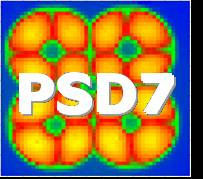Speaker
Dr
Lars Reuen
(Bonn University, Germany)
Description
By incorporating a field effect transistor into a fully depleted
sensor substrate the DEPFET sensor combines radiation detection and
amplification allowing for low noise measurements and high spatial
resolution. This makes DEPFET sensors an auspicious technology for
the vertex detector of the planned International Linear Collider
(ILC). The demands on the vertex detector are high, including small
pixels (20-30 µm) and fast readout of almost a giga pixel in 50µs.
Aiming to meet these high demands a prototype system with fast
steering chips, a current based readout chip and a 64x128 pixel
matrix has been build. Lab measurements of the system with 55Fe show
excellent behavior with noise less than 250 e- (ENC).
In order to study the systems behavior under more realistic
conditions and with regards to the detection of MIPs a test beam
period at the DESY Synchrotron in January and February 2004 has been
carried out. Modifications concerning hardware and read out mode
were necessary to ensure compatibility of the DEPFET system with the
Bonn microstrip telescope (used before for ATLAS) which was employed
for particle tracking. The DAQ- and offline software had to be
written largely from scratch as this is the first time for the
DEPFET system to be operated under test beam conditions. Two
different matrices have been characterized with an emphasis on
charge collection efficiency. The talk will give a short description
of the system and its performance in the lab and then focus on the
test beam setup and its results
Primary author
Dr
Lars Reuen
(Bonn University, Germany)
